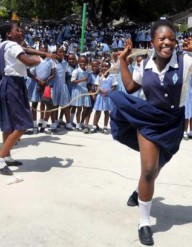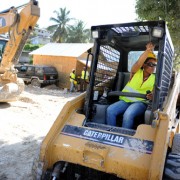USAID is playing a central role as the United States crafts a strategy to implement United Nations Security Council Resolution 1325, which lays out a broad set of approaches designed to empower women in conflict-affected nations.
The resolution, known simply as 1325, was first adopted a little more than 10 years ago by the U.N. The international body then asked member nations to develop National Action Plans that address how they would promote women's participation in peacebuilding in their countries through their diplomacy and development efforts.
Secretary of State Hillary Rodham Clinton announced the United States' commitment to write its action plan late last year, and USAID co-hosted an event with the U.S. Institute of Peace in November 2010 to formally jump start it.
Back then, Sarah Mendelson, deputy assistant administrator in the Bureau for Democracy, Conflict and Humanitarian Assistance, said: "We at USAID are working toward a comprehensive strategy of implementation for 1325—and under the guidance of Deputy Administrator Don Steinberg, we will be leaders in the donor community on this issue."
Steinberg has been an advocate for women's empowerment for some time. (See Q&A with Steinberg)
The National Security Council is leading the interagency effort, with USAID providing development and humanitarian expertise, and representatives from the Departments of Defense and State contributing their knowledge. Each agency is developing a component of the plan that shows how it will implement 1325 through its policies and programs.
"It became an opportunity for USAID to share its efforts to integrate women within its peace and security planning and programs with its inter-agency partners," said Jessica O'Connor, a project development officer in USAID's Office of Conflict Management and Mitigation. Such efforts include supporting women's participation in peace processes and reconciliation efforts, providing life-saving assistance to women and girls in conflict areas, and reducing the risks of sexual and gender-based violence for vulnerable groups.
Though the planning is still in the formative stage, the overarching goals are to assess what the United States is doing well—and build on that—and to pinpoint weakness and ways to improve. The plan will also ultimately address a gender-sensitive approach to relief and recovery, and integration of gender training and analysis throughout USAID's programming, said Summer Lopez, a democracy specialist with USAID.
Women especially are often absent from the decision-making table once conflict has ended and post-conflict planning needs to begin—many times because they are not seen as key stakeholders, or face other barriers to participation such as a lack of transportation, childcare, or security. The National Action Plan will, in part, says O'Connor, "make sure their participation is meaningful."
The U.S. effort ultimately will inform how USAID looks at gender in its programs.
For now, Agency and other U.S. government officials are holding meetings to work on the nuts and bolts of drafting the plan, including reviewing plans from other U.N. member countries.
The U.N. asked all its member states to develop National Action Plans following the tenets of 1325, and 23 countries have done so thus far. The United States hopes to complete its plan by fall 2011.











Comment
Make a general inquiry or suggest an improvement.